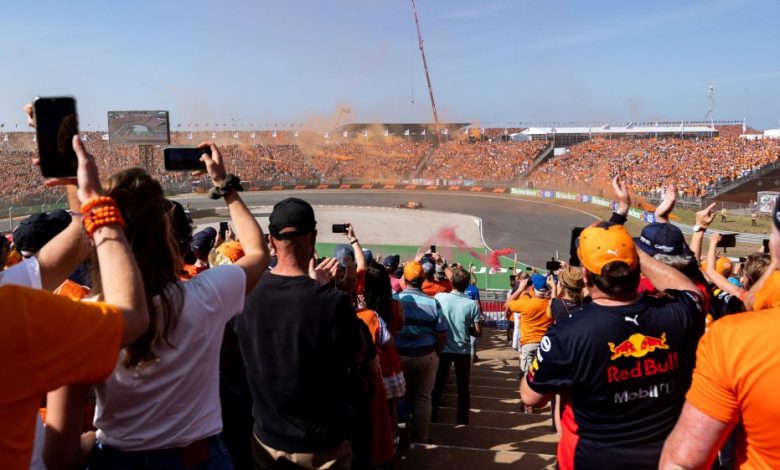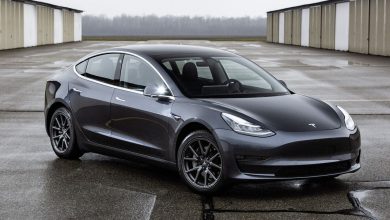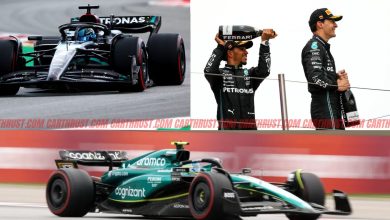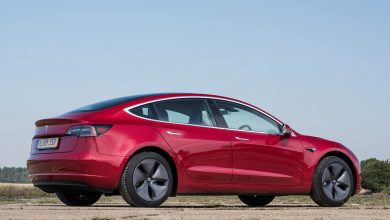
The spectacular curves and bankings of the short and fast circuit were enticing to watch last year among the Orange Army cheering for Max Verstappen. This year, it will be interesting to watch how the cars of the new regulation perform, especially with higher downforce and close racing as compared to last year.
An Update on the Technical Regulations
Since last week, after the summer break, the FIA has begun to scrutinize all the cars on the grid even more, in order to even out the field and improve drivability of the car for the next few years. At the Belgian GP last week, they introduced a new device to measure the porpoising of the cars, or the vertical oscillations. According, if they find the oscillations to be more than the pre-determined figure, then the teams will be asked to rectify it, even though it may affect their car’s performance. In either case, from the visible perspective, almost all cars last week did not show much bouncing, apart from Williams. The Mercedes W13 and the Ferrari F1-75, though a lot improved than before, still did not seem as smooth as the RedBull RB-18.
It has also come to light that Race Directors for Zandvoort are considering an extended DRS detection zone. Last year, the DRS zone started from Turn 14, but this year, it has been decided to be enabled from the steep banking before the corner. This however, has sparked some controversy. Experts worry that the extra load on the Pirelli tires due to the DRS zone on the banking may pose a safety risk, even though it may provide extra overtaking opportunities. However, the regulations are still in discussion and nothing will be set in concrete until after the Friday practice sessions.
Driver Market updates
Oscar Piastri’s case concerning Alpine and McLaren has been taken up by the FIA’s Contract Recognition Board (CRB), who will make a ruling after considering the arguments and contracts of all the concerned parties. A decision will be made upon Piastri’s contract with Alpine or McLaren for 2023.
On a separate note, Pierre Gasly now has the clean chit to look for a drive after 2023. According to Michael Schmidt from Auto, Motor und Sport in Belgium, Helmut Marko has allowed Gasly to move to Alpine if given a good offer. He further went on to mention his interest in Colton Herta from IndyCar who is yet to obtain a super license. Gasly and Ocon at Alpine will form an All-French lineup, but past disagreement between the two drivers is well-known as they do not see eye to eye with each other now.
Mick Schumacher will also cut ties with Ferrari at the end of this year, and will be free to choose a team of his own liking for next year. The young German is yet to secure a drive for next year though a contract renewal with Haas does still seem very likely. Earlier it was also said that his contract renewal with Haas for next year depends upon his performance for the rest of the season. Interestingly both himself and teammate Magnussen finished P17 and P18 respectively in Spa, but also admitted that the circuit was not suited to their car build.

Another piece of trivia is regarding the newcomers in F1. Since the past few months, Porsche and RedBull were discussing terms of a new deal for supplying Power Units, but all of it is moot now, because both parties have decided not to join hands anymore. On the other hand, Audi AG might reveal which team they will supply Power Units to in the course of this weekend.

How will the Top 3 perform at Zandvoort
RedBull have admitted that Verstappen’s blistering drive at Spa was a more or less unique occurrence, which may not appear this weekend. Speaking to the media, Mercedes strategy chief James Vowles revealed that Hamilton will be coming to Zandvoort a lot stronger after his 45G shunt at Spa last week, which had pre-maturely ended his race. It was also speculated that he could also get a new PU, and therefore a penalty due to the damage sustained last week. Reportedly, Ferrari have tried to gain the FIA’s attention upon the unbeatable pace of RedBull at Spa, specifically emphasizing their guess that the Milton Keynes team was not respecting the cost cap and was spending more funds on development than it is bound to do so.




